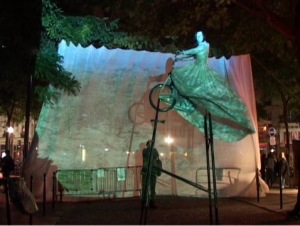I was testing out some real-time video matting in Max/MSP, that we developped for an ongoing project (edit: the Cinematon is out!), and realized that “sunset.jpg” demo file was a nice match for this memorable dialogue in Romero’s “Night of the living dead”… If it weren’t for all those zombies outside, it could have been such a lovely campfire scene!
Tags : #video
ONE
L’arbre qui cachait la forêt
Sisyphus in the anthropocene hamster-wheel.
L’arbre qui cachait la forêt is a multimedia installation originally proposed for the Festival of Lights of Lyon (FR) happening on december 8th. The theme was about ecology and artists were encouraged to make use of little and/or renewable energy.
The installation consists of an interactive video projection of a tree, with the screen placed precisely where the filmed tree is located. The screen offers a view that matches the perspective of the global environment. In front of this screen, a giant hamster wheel awaits a visitor. The rotation of the wheel causes the video to progress from the current date of the festival, close to the winter solstice, when the tree is apparently dead, to the summer solstice at midday, when the tree is fully green against the deep blue sky. But as soon as the visitor stops running after that desired blue summer sky, the video rewinds to the cold winter night.
Prior to the installation, the tree has been shot with timelapse photography technique during a whole season.
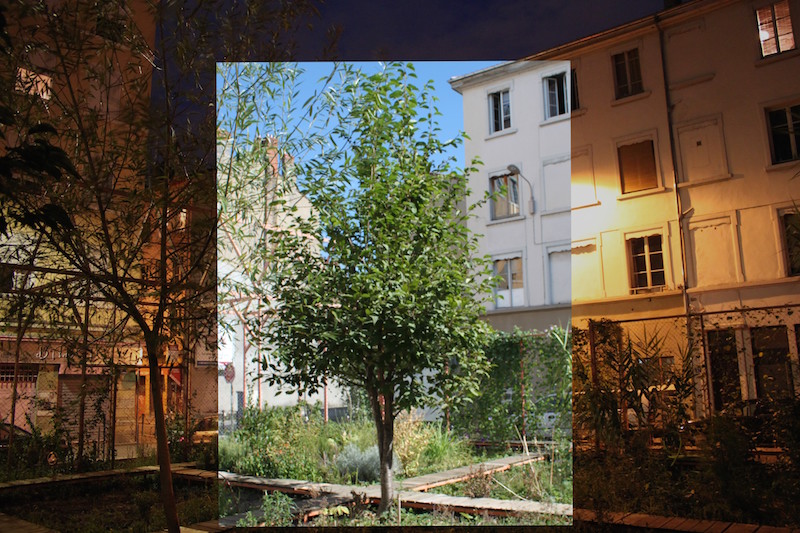
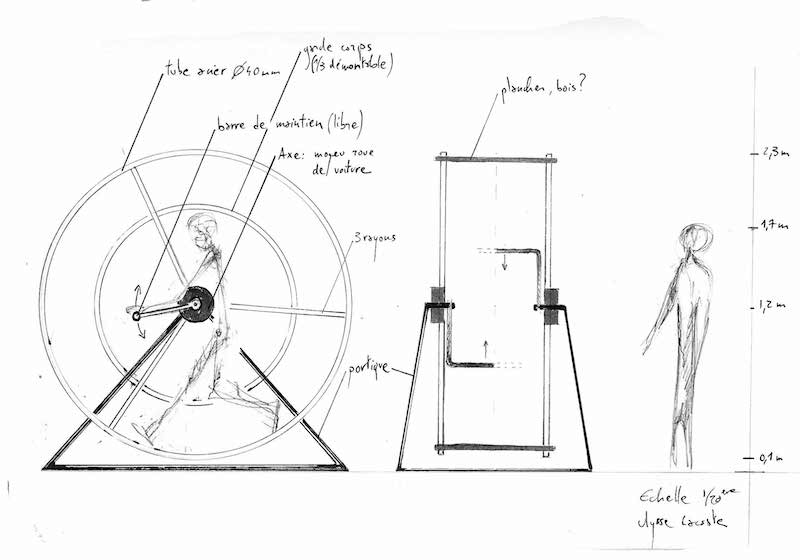
Meta-Screen
Turn a gothic church to a giant pinball.
Meta-Screen was a video mapping project led at Puce Muse, to transform any surface into a projection screen. Developments included tools to quickly map a shape or a contour, as well a real-time algorithm to interact with these shapes, like physics engine to make virtual objects bounce on architectural features.
Meta-Screen is available from Puce Muse’ Meta-Librairie.
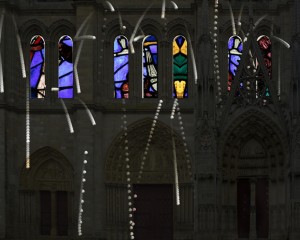
Donjon
107724404×8
Digital moving picture.
107724404×8 is the audiovisual rendering of a binary pdf file raw data.
The video reveals the internal structure of the file as both visual and sonic shapes. Compressed parts of the file will look and sound noisy while uncompressed parts will show redundant patterns and somewhat harmonic sound spectrum.
Original video is 10min long and 1024× 768px.
Beware of the rrrraw sound.
fuite de points
“vanishing points vanishing”
media music room
transforming a place into a collective audiovisual instrument
media music room is a collaborative workshop held in DauHaus, Sofia [BG], aiming at transforming a place into an interactive and collaborative music audiovisual instrument, through hacking and bending things at hand. During a week, a small team worked using all kinds of recycled and in-situ materials (bench, lamps, microphones, clothe) and softwares (max/MSP, pure data, processing, flash, etc.) to create an interactive setup, made of a bench-o-phone, ceiling-lamps-turned-to-audio-delays, pen tablet drumloop mixer, joystick-contolled sound scrubbers, audiovisual feedback and synched projection fitting the location architecture. This camp was open to any visitor as an opportunity for local people to meet, share ideas, bring their own audio/video material and conceive together. At the end of the week, an event was organized where anyone could play the multimedia instruments.
The project was also meant as a thought-provoking exchange on the notion of instrument in the contemporary society, following theories raised by John Cage or Christopher Small.
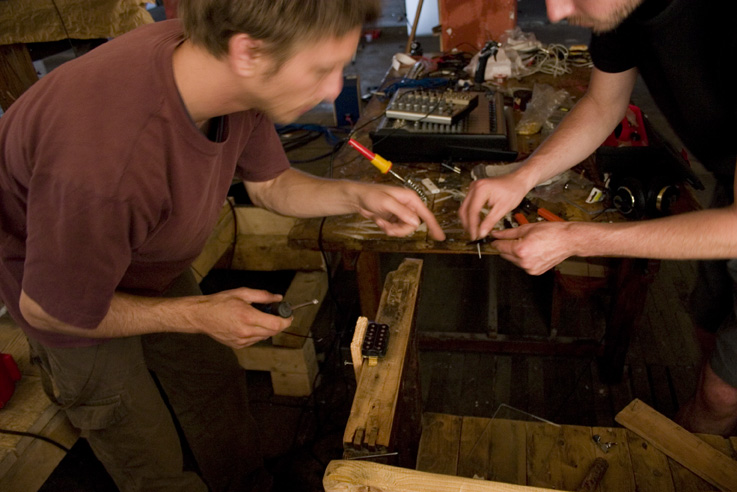
The project took place in studio DauHaus, during my residency in Sofia at InterSpace Media Art Center.
Special thanks goes to the French Institute for their support, and to Goethe institute and Pro-Helvetia for lending beamers.
drawing app for oXc by Pierre Sauvageot
Drawing application designed for the show oXc by Pierre Sauvageot and Lieux Publics.
cyclescape
Scrolling the landscape with an indoor bike.
Recycled indoor cycle, hacked dynamo, arduino and custom electronics, old PC running a pure data patch.
An indoor cycle is perched in front of a projected video screen, whose wheel rotation controls an interactive video. When the rider is cycling, the landscape is scrolling at an exagerated speed. When driving slowly or at rest, the screen displays abstract moving images from the limbos.
Cyclescape was made for “Vanité #10 : Visible Invisible” by Luis Pasina & co, during Nuit Blanche 2008, Paris.
